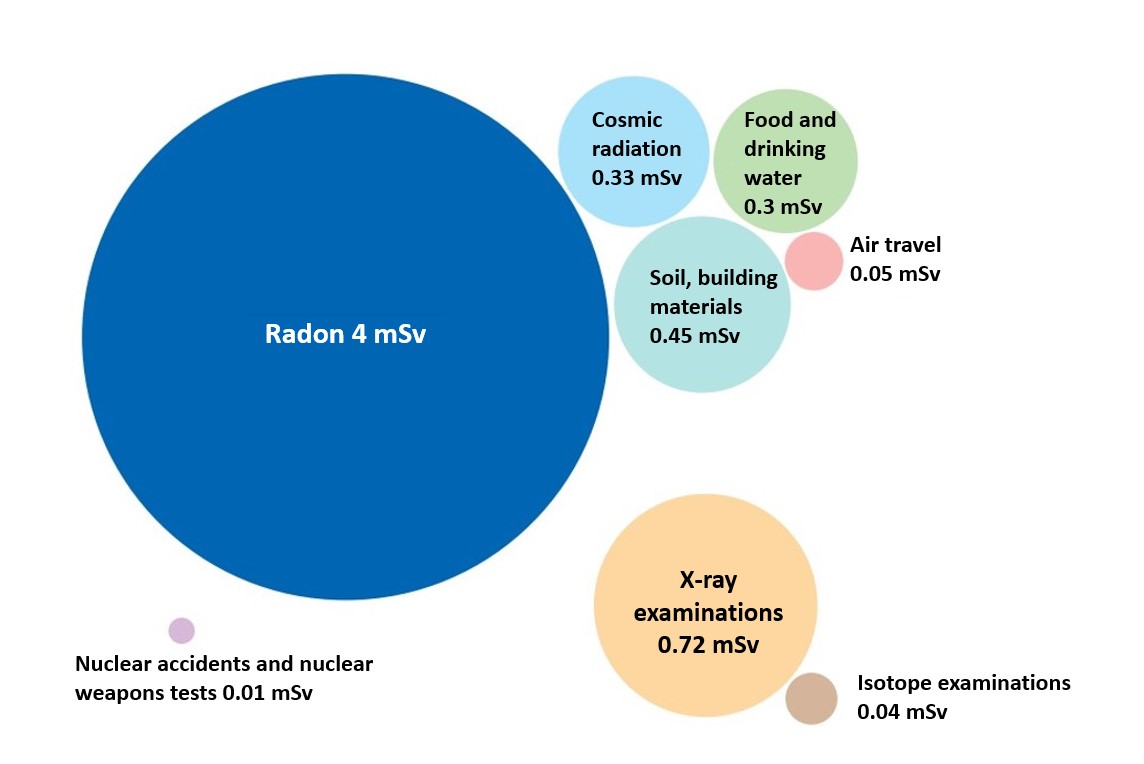The average radiation dose received by a Finn
Finns receive an average effective radiation dose of 5.9 millisieverts (mSv) annually, calculated on the basis of 2018 data.
By far the highest levels of ionizing radiation that Finns are exposed to comes from radon, with the most significant source being the home. The radiation dose from indoor radon is 4 mSv per year. Approximately 1.1 mSv of the radiation dose originates from natural background radiation other than indoor radon. Background radiation is partly cosmic radiation from space and partly the radiation from radioactive materials in soil and building materials.
On average, the medical use of radiation causes a Finnish person an annual effective dose of 0.76 mSv. The radiation dose fraction of the radiation dose caused by radioactive substances in Finnish nature following nuclear accidents and nuclear weapons testing carried out in the 1960s is extremely low.

Effective dose
The effective dose describing exposure to ionizing radiation is a calculated quantity that describes the detriment caused by radiation on a person’s health. As the effective dose grows, so does the risk of contracting cancer caused by radiation.
However, the average amounts of effective doses from different sources do not directly describe the risk. For example, the health risk caused by radon is estimated on the basis of epidemiologic examinations, not the effective dose. Every year, an average of 280 Finns die from lung cancer caused by radon. Of these cases, 240 deaths are induced by smoking in addition to radon.